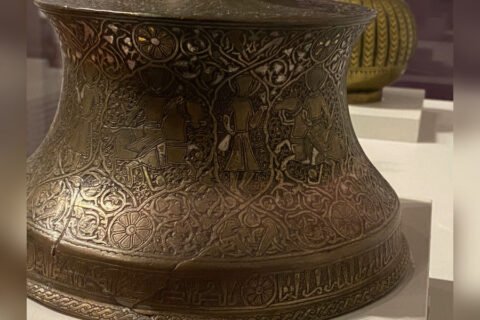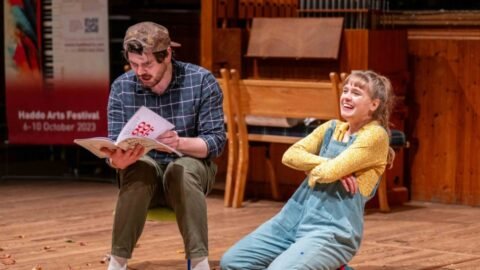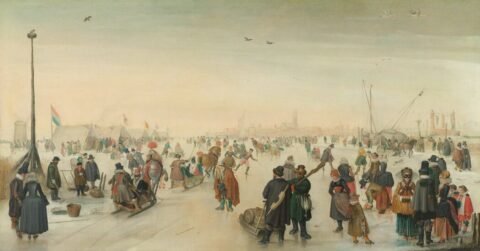When it comes to India’s rich heritage, everyone is emphatic that it needs to be preserved and maintained. But when it comes to action, there is much of a slip between the cup and the lip.
“Our heritage gives us pride in being Indian. Our tangible and intangible heritage is a symbol of our history. Previous generations handed it to us and that is a responsibility on us—we need to come together to protect it, or else, future generations will not forgive us.” That was Union Minister for Tourism and Culture Gajendra Singh Shekhawat speaking at the first THE WEEK Heritage Awards in New Delhi on September 13. “When a society gets inspired from its history, it can learn how to right the wrongs,” he said.
Shekhawat pointed out how India’s rich history and heritage suffered in the past, especially when the nation was enslaved. “Our heritage was taken out with impunity. Even after independence, it kept going out, legally and illegally,” he said. “Those responsible for preserving India’s heritage got lazy, but we are now bringing in an ecosystem to preserve it.”
Highlighting how the Modi government is turning the preservation of heritage into a mass movement, the minister commended THE WEEK for the Heritage Awards venture and remarked how it would contribute to the preservation of the nation’s history and heritage.
The awards were given out to state tourism boards under various categories and, as THE WEEK Chief Associate Editor & Director Riyad Mathew said, this was but a small effort to meaningfully contribute to preserving the nation’s heritage and ensuring that it is accessible to more people.
The event, attended by tourism officials, bureaucrats, travel industry professionals, policymakers, cultural doyens and artists, was not just a confluence of heritage and arts, but also a forum for exchange of ideas. Discussions went beyond pride in one’s cultural heritage into shaping a consensus on how best to protect and propagate heritage beyond just ‘dead’ buildings into a living, breathing experience of one’s shared past.
As Ratish Nanda, India CEO of the Aga Khan Trust for Culture, reminded the audience, heritage can pay back, too. “Heritage is an economic asset. Not every site can or should be commercially leveraged, but if preserved properly, heritage will always give back.”
But Indian heritage conservation does need a fresh take. “Storytelling is crucial,” said Tanuja Pandey, adviser to the Maharashtra tourism department. “Tourists want experiences, not just monuments. We need better guides, light-and-sound shows and digital outreach. At the same time, sites must be made more open and accessible to the differently abled.”
As state representatives expounded the myriad attractions of each state, what was clear was the immense potential available across India, just waiting for the right exposure. For instance, Dr Ilayaraja T., managing director of the Madhya Pradesh Tourism Development Corporation, rolled out the many attractions of the ‘heart of India’—from UNESCO World Heritage Sites to monuments running into multiple hundreds and attractions ranging from jungles to textile heritage. He then asked, “Do you know that you can see tigers right in the state capital Bhopal?”
The definition of heritage also varies, and can go far beyond the archetypal notion of forts and palaces. For Brenda Pakyntein, director, Meghalaya Tourism, that would be the natural landscape, which is a source of livelihood to be protected and showcased. For Sreevatsa Kotha, joint metropolitan commissioner of Hyderabad Metropolitan Development Authority, representing Telangana Tourism, it is all about moving ahead of Hyderabad’s long and rich cultural legacy to focus on “restoring lakes and reviving lost traditions”.
Beyond tourism, India’s long tradition of arts and culture does need a helping hand to make it relevant for the next generation, and experts opined how it has to be a lived experience. Dr Kamalika Banerjee, science policy expert from IIT Delhi, drew attention towards the structural barriers that separate science from culture. “There is a clear demarcation between humanities and science in our education system. We must rethink that divide,” she said.
Renowned sarod player Dr Chandrima Roy Majumdar wanted music and dance to be part of the upbringing, while Bharatanatyam dancer Shreyasi Gopinath echoed the call to normalise art in everyday settings, including introducing arts at the pre-school level. Pragya, a heritage walk expert, summed it up, “Beyond passive learning, we need experiential and immersive methods. Children must walk through monuments, listen to stories, meet artists; it is only then that heritage becomes a lived memory rather than a chapter in a textbook.”
The event opened with a sitar–tabla jugalbandi by Megha Rawoot and Kapil Sharma. The evening also featured the evocative art of Dastangoi, presented by Usman Siddique and Rajesh Kumar of the Dastangoi Collective.
—With Kanu Sarda






